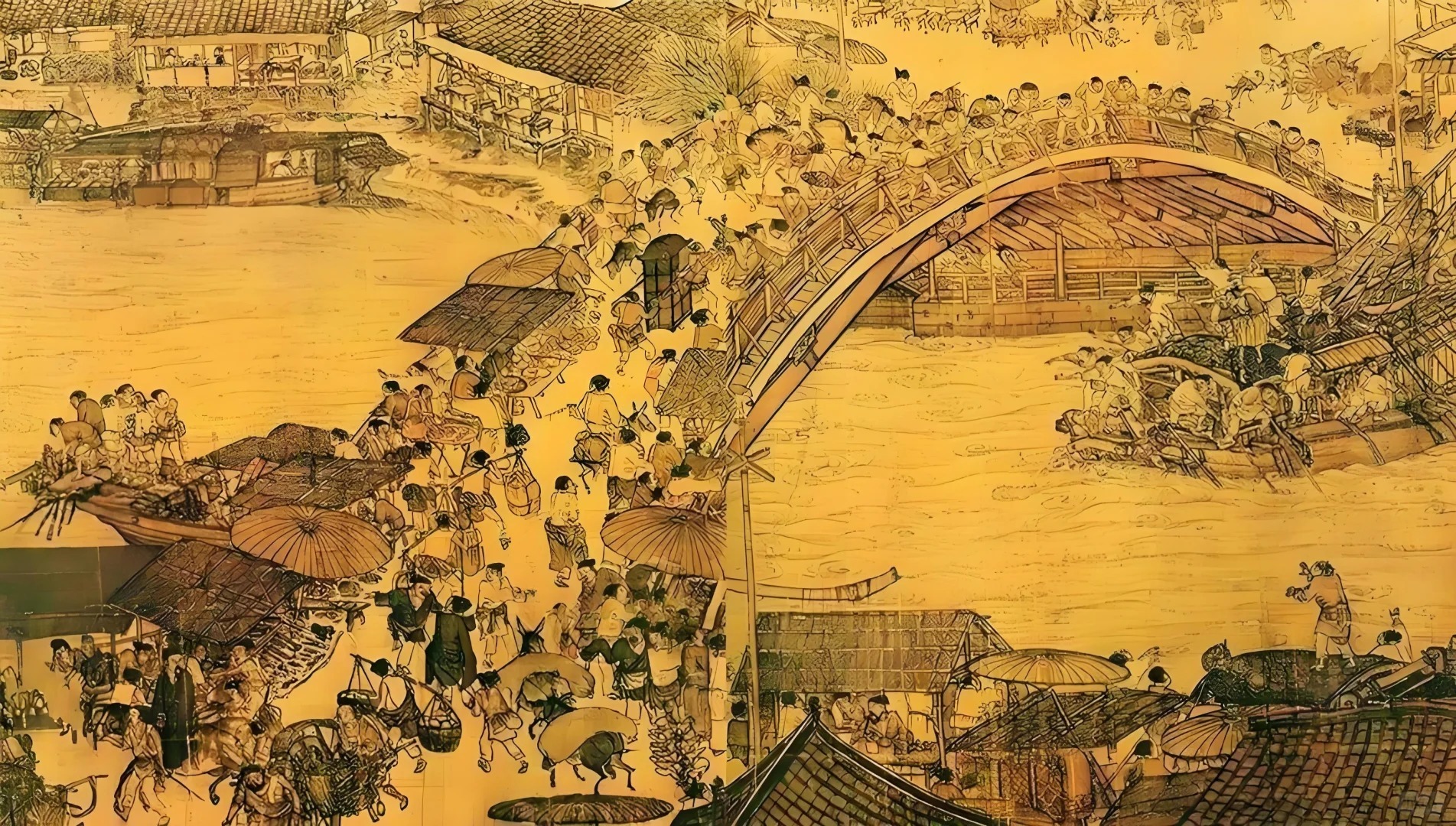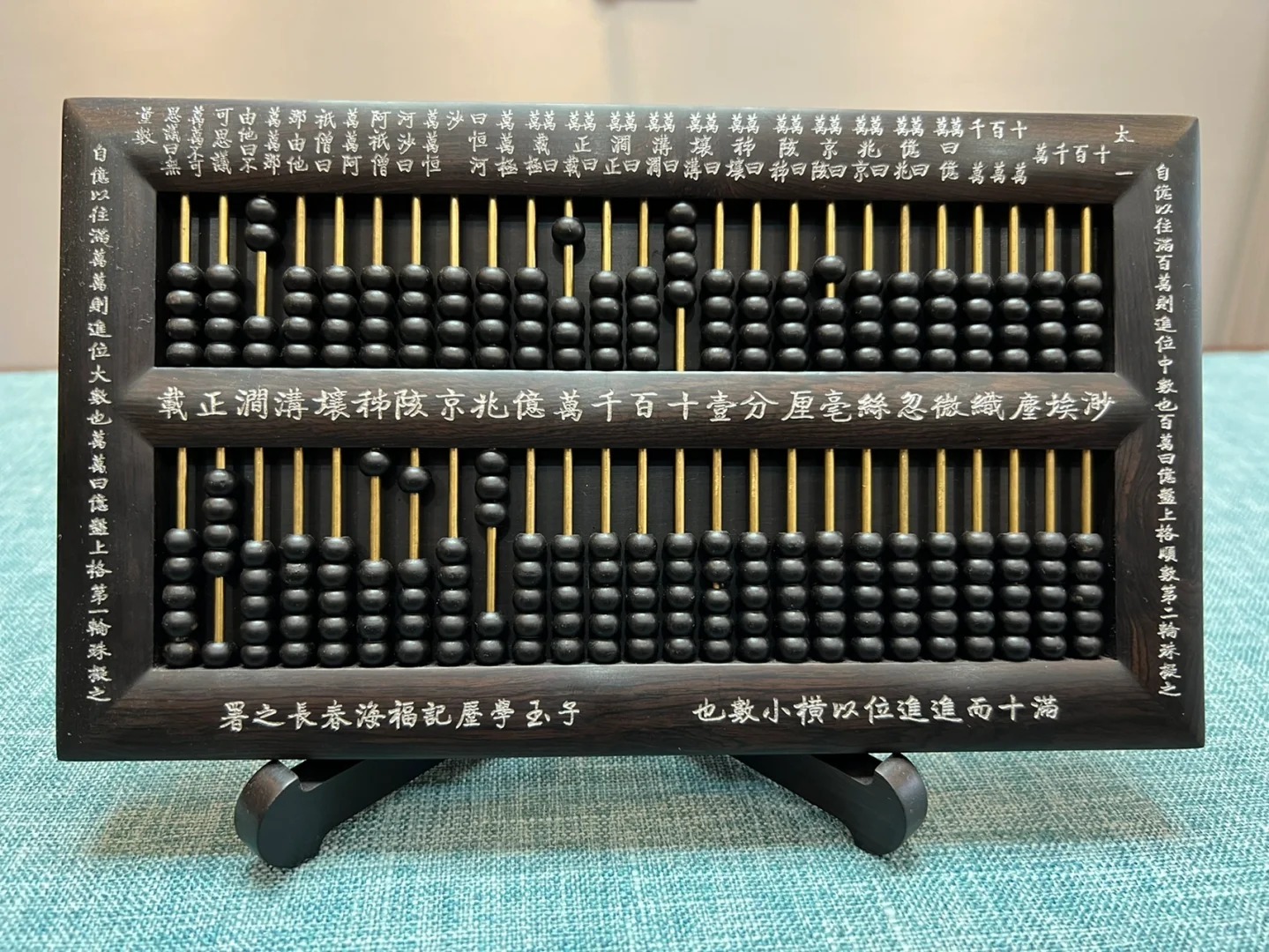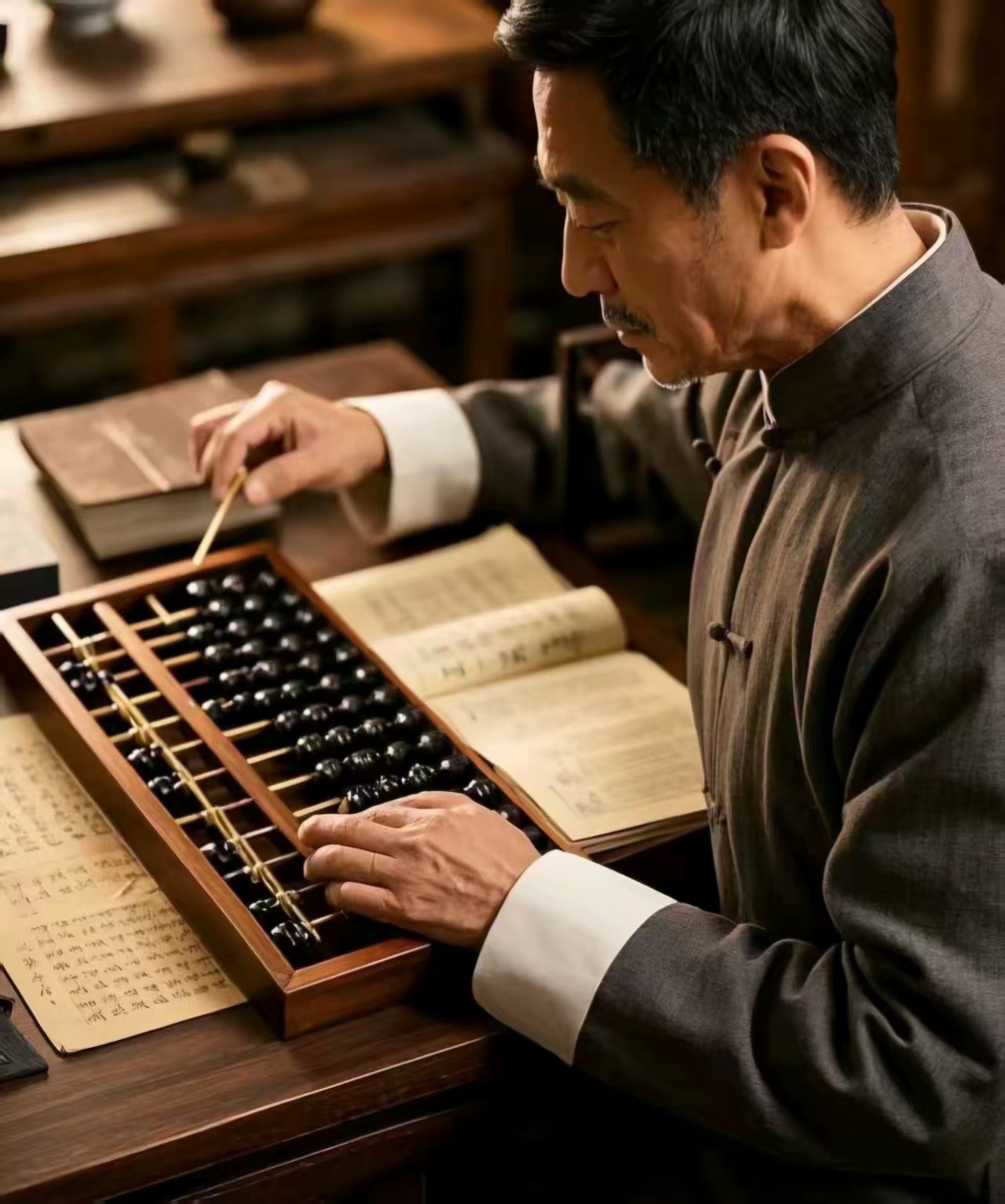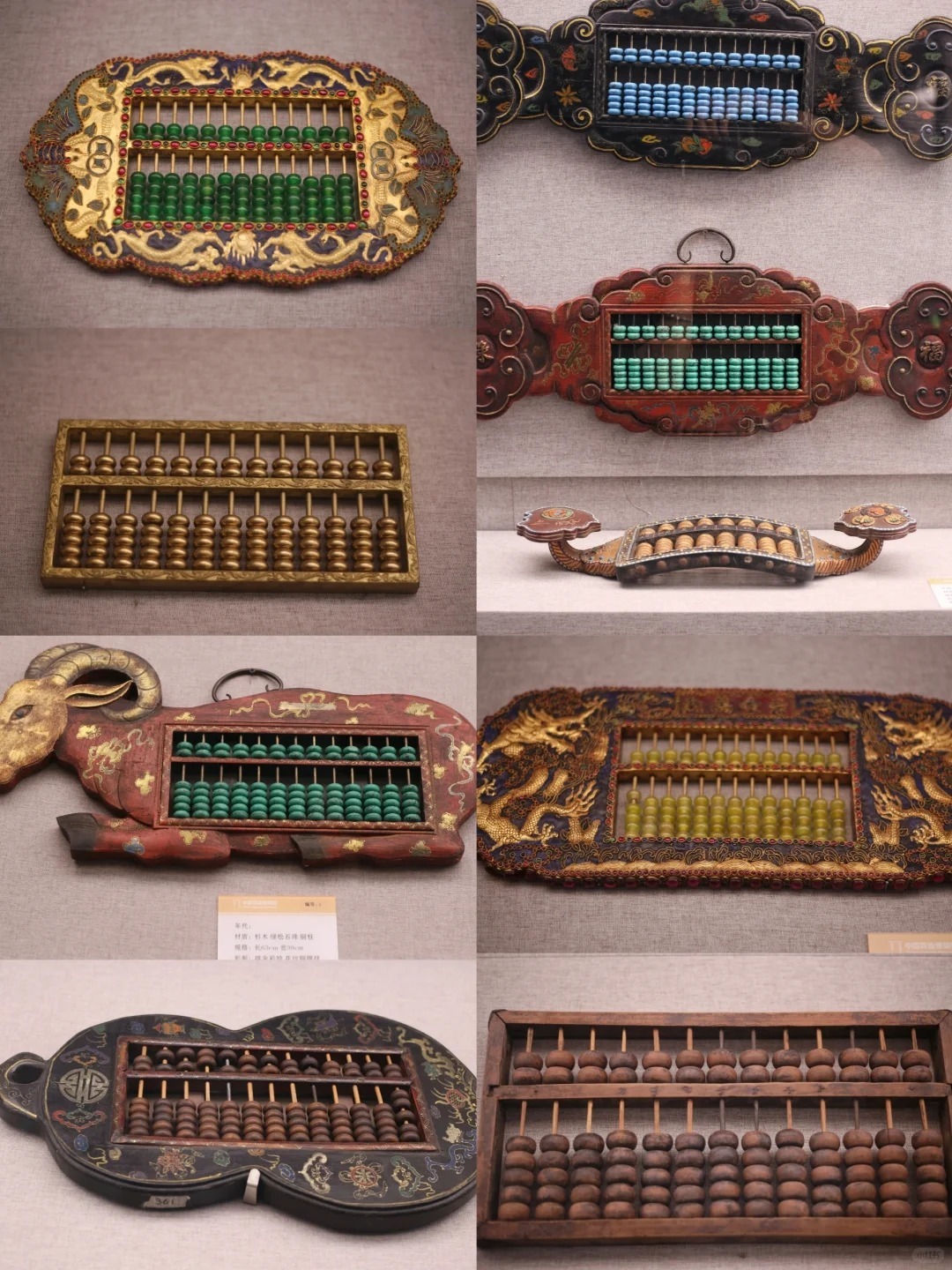The Abacus: How a 1,000-Year-Old Chinese Tool Helped Build Atomic Bombs
It all started with a dusty old suitcase tucked away in the corner of my aunt’s attic. She had recently returned from a trip to North America, bringing back souvenirs, stories, and—apparently—a few surprises. As I helped her unpack, I noticed something unusual peeking out from beneath a pile of sweaters. Curious, I pulled it out, and there it was: an abacus (算盘, suànpán ).
At first glance, it seemed like just another artifact from the past—a wooden frame with rows of beads neatly lined up. But as I ran my fingers over its smooth surface, I couldn’t help but feel a strange sense of connection, like this little object carried secrets far beyond its humble appearance. My aunt caught the look on my face and laughed. “Ah,” she said, “you’ve found my hidden gem.”
And just like that, she began to tell me its story.
A Glimpse into History: The Song Dynasty and Beyond

The abacus, she explained, wasn’t just some forgotten relic. It was once a cornerstone of daily life—a tool so revolutionary that it changed the way people thought about numbers and problem-solving. To illustrate her point, she showed me a picture of the famous Qingming Shanghe Tu (清明上河图), or Along the River During the Qingming Festival . This ancient scroll painted during the Song Dynasty (宋代, 960–1279 AD)—a period over 1,000 years ago —captures the vibrant energy of Bianjing (汴京, modern-day Kaifeng), a city alive with merchants, artisans, and scholars.
And there, nestled on the counter of a shop, was what appeared to be an early version of the abacus. “That,” she said, pointing at the tiny image, “is where it all began.”
Can you imagine? Over 1,000 years ago , before calculators, computers, or even widespread literacy, people were using this simple yet ingenious tool to manage complex transactions, build infrastructure, and plan for the future. The abacus wasn’t just about counting coins or tallying goods—it was a symbol of human ingenuity, a tool that helped civilizations organize their world and dream bigger.
How Does It Work? The Magic of Beads and Rods
As we sat together, she walked me through the basics. The abacus is elegantly simple yet incredibly powerful. Each rod represents a unit—ones, tens, hundreds, and so on. Below the central beam, each bead stands for “1” (一, yī ), while above, each bead equals “5” (五, wǔ ). Using a system of fives and tens (五升十进制, wǔ shēng shí jìn zhì ), you can add, subtract, multiply, and divide with remarkable speed and accuracy.

But here’s the thing: the abacus isn’t just limited to basic math. In fact, she shared a fascinating story about a man named Zhou Maoqi (周懋奇), a brilliant engineer who designed China’s first modern warship, the Pingyuan (平远号) during the late Qing Dynasty (清朝, 1644–1912). To handle the complex calculations required for shipbuilding, Zhou created a supercharged version of the abacus called the Ziyu Suanpan (子玉算盘), which had 45 rods . Imagine trying to crunch numbers for naval engineering without computers—that’s the kind of brilliance the abacus inspired!
This high-order abacus could handle numbers ranging from the smallest unit, such as Taiji (太极, representing infinitesimal values), to astronomical scales like Wuliangji (无量级, “immeasurable”). It achieved what many modern tools struggle to do today: full numerical coverage across vast scales.
The Heartbeat of Commerce: Year-End Accounting
My aunt then reminisced about how, in her childhood, the abacus was still very much a part of everyday life. She described scenes from the end of the lunar year, when businesses would gather to settle accounts. These weren’t quiet affairs—they were grand spectacles! Picture massive abacuses laid out in courtyards, surrounded by teams of accountants furiously moving beads while managers double-checked figures using mental arithmetic. Everyone worked together until every last number matched perfectly.

“It was like a symphony,” she said, smiling. “And let me tell you, when those beads clicked into place, it wasn’t just gold they counted—it was trust, hard work, and community.”
These gatherings were a testament to the precision and teamwork valued in Chinese culture. And if you think about it, this tradition dates back centuries—a practice passed down through generations, connecting us to our ancestors in ways we often overlook.
More Than Just Numbers: A Symbol of Prosperity
Over time, though, the abacus took on new roles beyond its practical use. People started turning them into works of art, decorating them with symbols of good fortune like qilins (麒麟, mythical creatures), cranes (鹤, hè , symbolizing longevity), and cicadas (蝉, chán , representing rebirth). Some families even displayed ornamental abacuses in their homes, believing they brought prosperity and harmony.

I asked her if she thought the abacus was obsolete now that we have calculators and smartphones. She shook her head firmly. “No way,” she said. “It’s not just about doing sums. The abacus teaches patience, focus, and discipline. Plus,” she added with a wink, “it never runs out of battery.”
A Legacy That Lives On: From Atomic Bombs to Modern Computing
Incredibly, the abacus played a role in some of China’s greatest achievements. For example, in the mid-20th century, during the tense era of the Cold War, China was racing to develop nuclear technology under intense international pressure. At the time, the country faced severe technological blockades, leaving scientists without access to advanced computing tools. So what did they do? They relied on abacuses to verify critical data.
With nothing more than beads and determination, these scientists proved Soviet calculations wrong and paved the way for the successful creation of China’s first atomic bomb in 1964 . Think about that: atomic bombs calculated on an abacus . If that doesn’t make you go “Wow,” I don’t know what will!
Even today, the principles behind the abacus influence modern computing. Whether it’s the algorithms powering your smartphone or the software guiding space missions, traces of the abacus remain. Its legacy lives on—not just as a museum piece, but as a foundation for innovation.
Why It Matters Today
Holding that abacus in my hands made me realize something important. While we may live in an age of advanced technology, the values embodied by the abacus—precision, perseverance, and creativity—are timeless. It’s a reminder of where we come from and, perhaps, a guide for where we’re headed.
So next time you see an abacus—or hear its soft clatter in your mind—take a moment to appreciate it. It’s not just a tool; it’s a bridge between generations, a testament to human ingenuity, and a quiet but enduring symbol of cultural pride.
And who knows? Maybe one day, you’ll find yourself unpacking an old suitcase and discovering a piece of history waiting to share its story with you.
Steven
Roots of China was born from my passion for sharing the beauty and stories of Chinese culture with the world. When I settled in Kaiping, Guangdong—a place alive with ancestral legacies and the iconic Diaolou towers—I found myself immersed in stories of migration, resilience, and heritage. Roots of China grew from my own quest to reconnect with heritage into a mission to celebrate Chinese culture. From artisans’ stories and migration histories to timeless crafts, each piece we share brings our heritage to life. Join me at Roots of China, where every story told, every craft preserved, and every legacy uncovered draws us closer to our roots. Let’s celebrate the heritage that connects us all.



